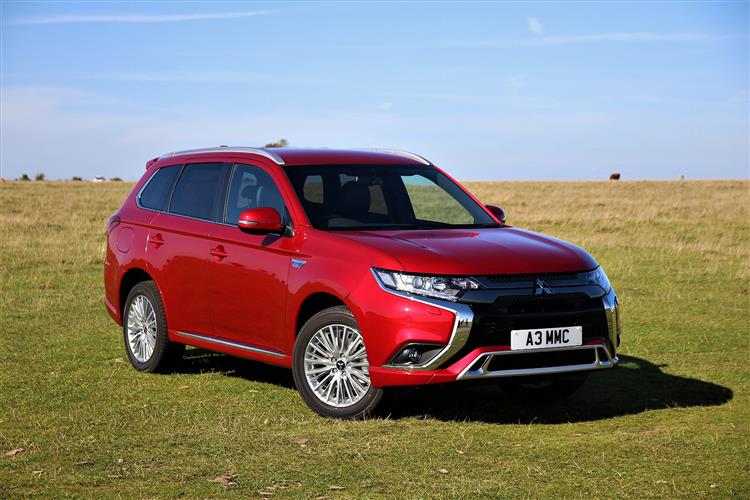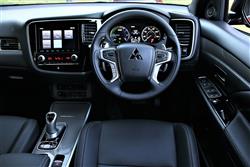How will you view?
This is a sample, showing 30 seconds of each section.
ALMOST FUEL-PROOF (some text hidden) SECTIONED_new_mitsubishioutlanderphev_2019
By Jonathan Crouch
Introductionword count: 83
The Outlander SUV was the world's best selling Plug-in hybrid in its period - and for good reason. Much of its success was down to the fact that it was first in this segment of the market, but Mitsubishi kept this car popular by continually improving it. That's certainly what the brand did in creating the much enhanced 2019 model year version of this car. It was a smarter, quieter and more appealing product. And is worth checking out as a used buy.
Modelsword count: 4
5dr SUV (2.0 petrol)
Historyword count: 472
Launched back in 2014, Mitsubishi's Outlander PHEV was the car that popularised Plug-in Hybrid technology and by 2018 was still the best selling model of that kind, both in our market and across our Continent. Partly, that was because the Japanese brand had been continually evolving it and did so once again in 2018, deciding to address the need to certify this car to the new WLTP-cycle standard by introducing a fresh 2.4-litre petrol engine mated to improved electrical technology. It needed to be good because this rejuvenated Outlander PHEV competed in a very different market to the one campaigned in by earlier versions of this SUV. For a start, there was by 2018 quite a bit more actual and imminent direct segment Plug-in competition, but of more concern to the brand was the scrapping in this period of the UK government's Plug-in Car Grant, which previously had subsidised this car's price to the tune of £2,500. It was just as well then, that this was the most technically advanced model that Mitsubishi had ever made. By 2018, over 115,000 Outlander PHEV models had been sold across Europe since 2014 and there had been times when this car had accounted for more than 50% of its brand's total sales - and more than half of all Plug-in car sales across the board. Initially, that success was down to the way that Mitsubishi was first to market with this technology, but latterly, it had much to do with the effective way that brand was able to communicate the benefits of PHEV motoring. The company reckoned that an average owner with a 20-mile each-way daily commute who did about 18,000 miles a year, paid company car tax and was switching from a typical 40mpg diesel SUV could save themselves over £5,000 a year by switching into one of these. There were though, limitations to Mitsubishi's cleverness here. The bulkiness of the mechanicals needed with Plug-in hybrid motoring prevented this petrol/electric variant offering the useful third row seating you'd get with an Outlander powered by a conventional petrol engine. For the same reason, the PHEV variant's fuel tank was smaller too, which is one of the reasons why this hybrid couldn't match the total operating range of the conventional model. Easier to address were a couple of the issues with earlier versions of this model: the rather vague handling and cabin quality that was previously slightly questionable, given the money being asked. Mitsubishi insisted that told that both issues had been dealt with by this revised model, which was just as well as that larger engine, also got a bigger 13.8kWh battery and greater electrical motor output. These were useful improvements, but sales were slow and the Outlander PHEV finally left the British market when the Mitsubishi brand pulled out at the end of 2021.
What You Getword count: 295
This isn't an SUV you'd buy to make a driveway statement but in its own way, it's a smartly functional bit of automotive technology. As for the changes made as part of the 2018 model year update to this third generation Outlander design, well they were relatively minor. Mitsubishi did, after all, make far-reaching aesthetic improvements to this car in 2016. Nevertheless, the company wasn't able to resist further tinkering with what it called its 'Dynamic Shield' design direction, though you'd probably have to be either a previous owner or a brand enthusiast to notice the changes. And behind the wheel? Well Mitsubishi upgraded the cabin of this car quite a bit as part of changes made to this car back in 2016, which didn't leave much scope for many further changes that could be made to this 2019 model year car without a complete cabin re-design. This improved model did get a restyled instrument cluster. And the front seats were re-contoured to give more lateral cornering support. There's comfortable room for a couple of adults on the back seat. And in the cargo area of this five-seat-only PHEV version, there's 731-litres of space - only 50-litres less than you'd get in the ordinary petrol version with the luggage area chairs folded. If you need more space, then folding the second row backrest frees up 1.85m of floor length. Unfortunately, you can't extend that with the kind of fold-flat front passenger seat that some rivals offer. Still, the space provided here is likely to be sufficient for the needs of most owners. If you were to load to the headlining, you'd have up to 1,472-litres of space in this PHEV variant. That's pretty close to the 1,608-litre total you'd get from the conventional petrol model.
To see the full road test text contact us on 0330 0020 227
Pictures (high res disabled)

.jpg)
|
.jpg)
|
.jpg)
| |||
.jpg)
|
.jpg)
|
.jpg)
| |||
.jpg)
|
.jpg)
|
.jpg)
| |||
.jpg)
|

|
Scoring (subset of scores)
Category: Crossover or SUV 4x4s
| Performance | |
| Handling | |
| Comfort | |
| Space | |
| Styling, Build, Value, Equipment, Depreciation, Handling, Insurance and Total scores are available with our full data feed. | |



